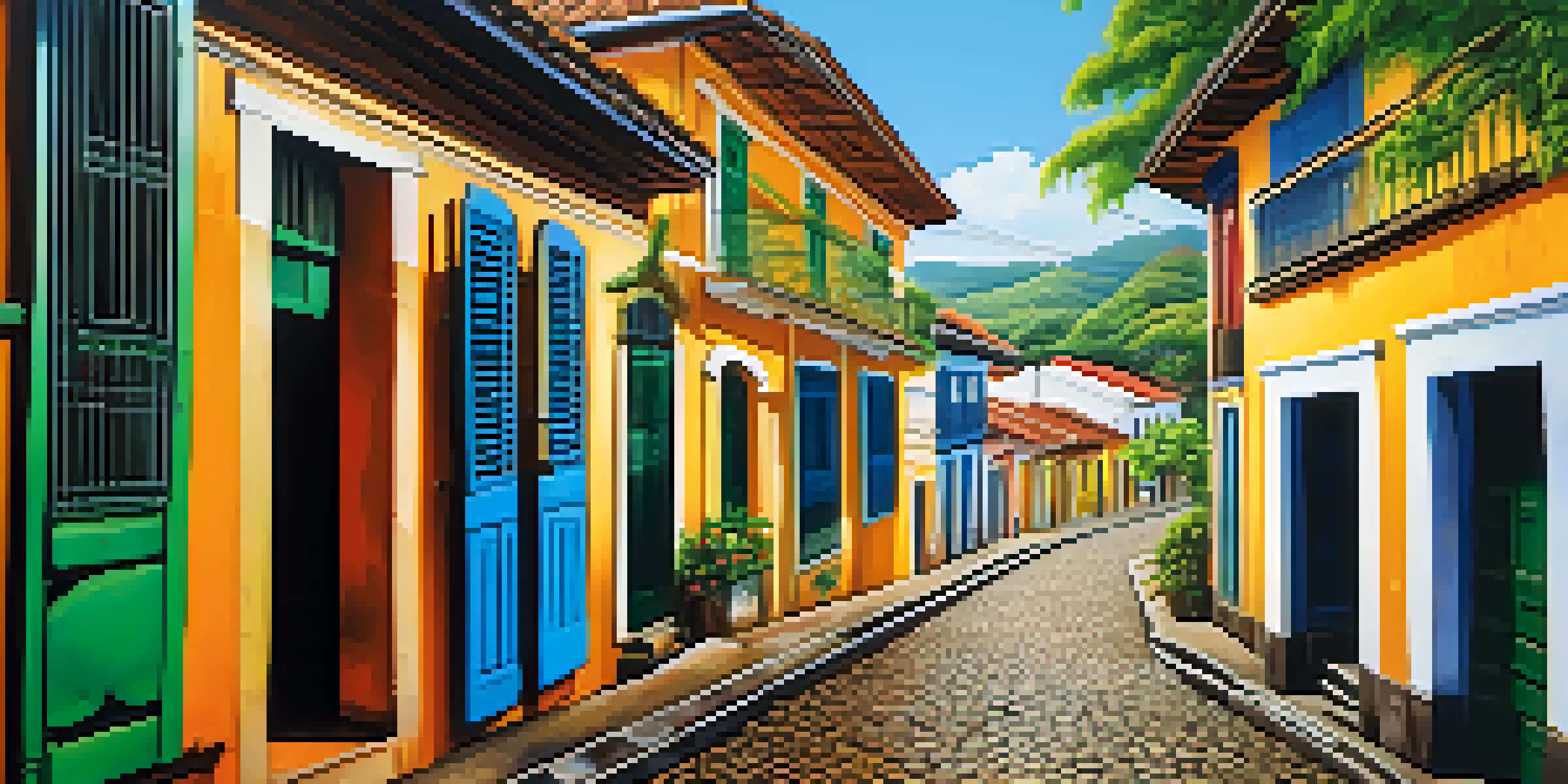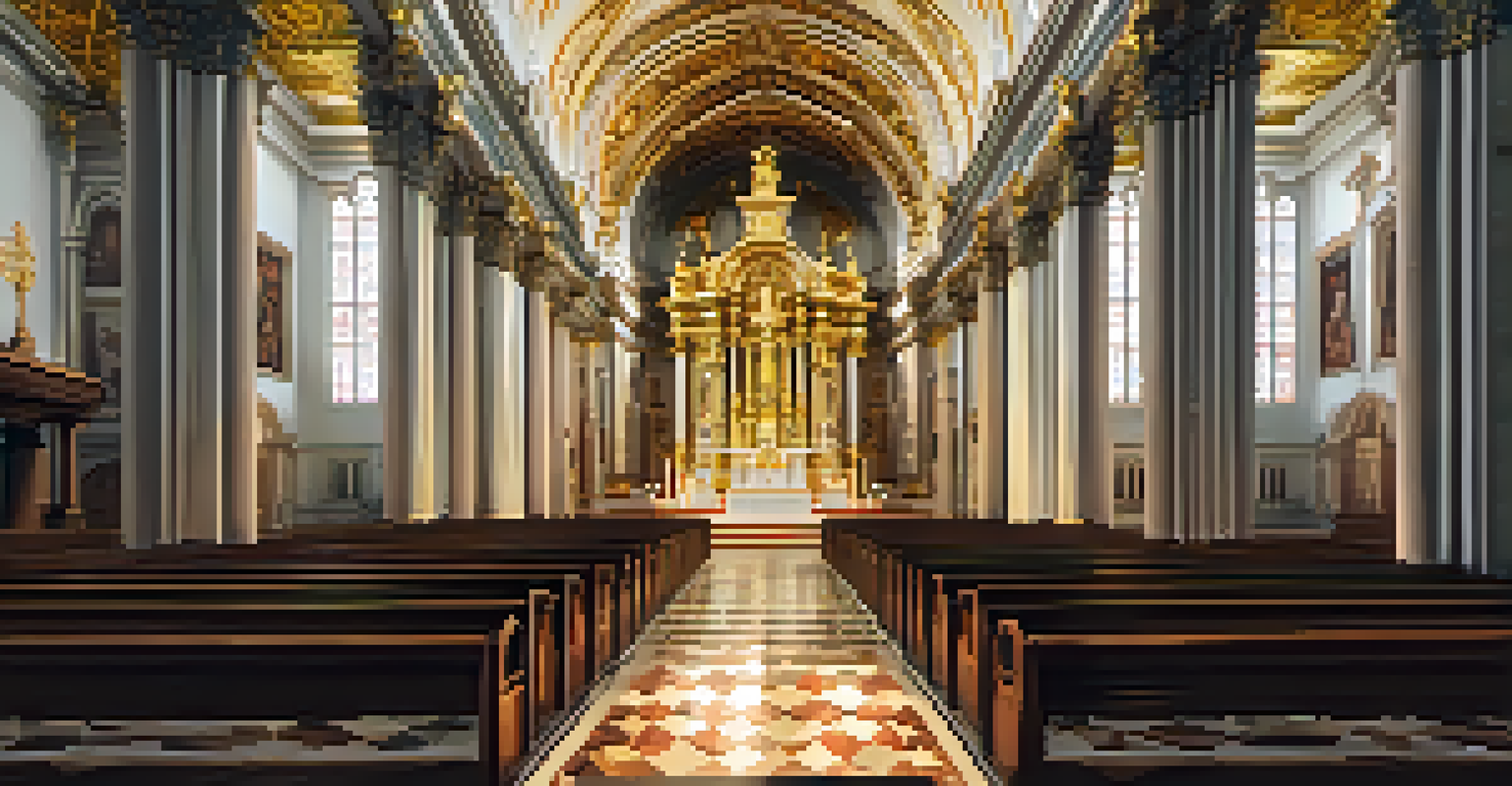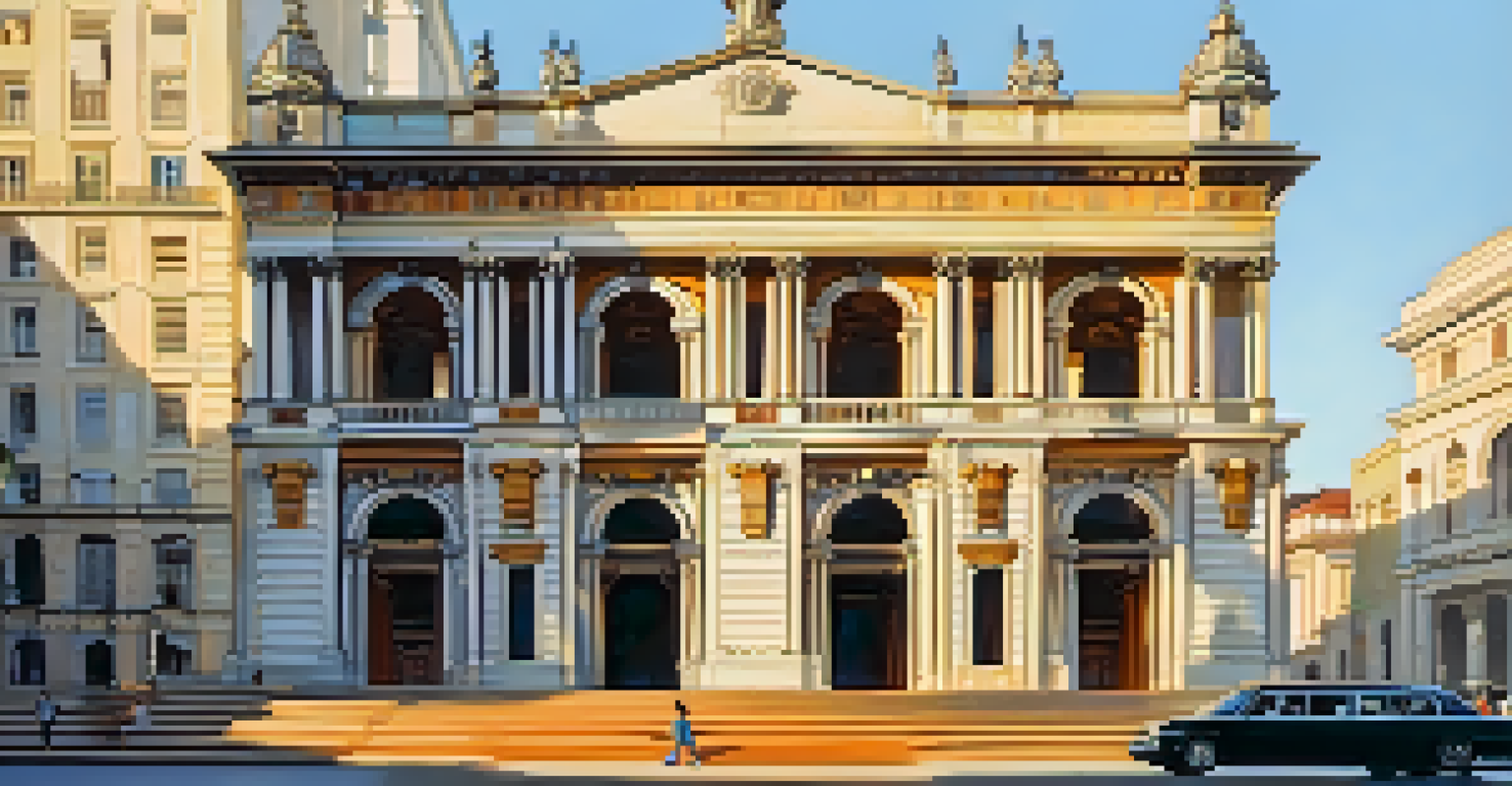Exploring Brazil's Colonial Architecture: A Journey Through Time

The Roots of Colonial Architecture in Brazil
Brazil's colonial architecture is a fascinating blend of European styles and local traditions. It began in the 16th century when Portuguese colonizers brought their architectural influences to the New World. This resulted in unique structures that combined Baroque, Neoclassical, and Rococo elements, adapted to Brazil's climate and resources.
Architecture should speak of its time and place, but yearn for timelessness.
For instance, the use of local materials like stone and clay, along with indigenous craftsmanship, created buildings that were not only beautiful but also practical. These architectural styles reflect the cultural melting pot that Brazil has become over the centuries, showcasing the influence of African, indigenous, and European cultures.
As you explore different regions of Brazil, you'll notice how these architectural styles evolved, telling a story of adaptation and innovation. Each city holds its own treasures, from the grand churches to the colorful colonial homes, inviting you to delve deeper into Brazil's rich history.
The Influence of Portuguese Baroque Architecture
One of the most prominent styles in Brazilian colonial architecture is the Portuguese Baroque. Characterized by its ornate detailing and dramatic curves, this style can be seen in many of the country's historic churches and public buildings. The most famous example is the Church of São Francisco in Salvador, which features intricate carvings and dazzling gold leaf interiors.

Baroque architecture was not just about aesthetics; it also symbolized the power and wealth of the Catholic Church during colonial times. The lavish decorations were meant to inspire awe and convey religious fervor, making these churches central to community life.
Colonial Architecture's Unique Blend
Brazil's colonial architecture showcases a fusion of European styles and local traditions, resulting in distinctive structures that reflect the country's diverse cultural influences.
Visiting these Baroque structures today allows you to appreciate the craftsmanship and artistry of the period. The combination of European design with Brazilian materials creates a distinctive look that stands out in the vibrant landscapes of the country.
Neoclassical Influences in Brazilian Cities
As Brazil moved into the 19th century, Neoclassical architecture began to make its mark. This style, which emphasized symmetry and simplicity, was a response to the exuberance of Baroque. You can see this shift in cities like Rio de Janeiro, where buildings such as the Theatro Municipal showcase grand columns and harmonious proportions.
Every building is a product of its time and culture, reflecting the spirit of the people who built it.
Neoclassicism was not just a stylistic choice; it also reflected the changing political climate of the time. As Brazil sought independence and a national identity, these structures became symbols of progress and modernity, aligning with Enlightenment ideals.
Exploring these Neoclassical buildings, you'll find that they evoke a sense of history and cultural pride. They serve as reminders of Brazil's journey towards becoming a sovereign nation, blending elegance with a new sense of self.
The Colorful Heritage of Colonial Towns
Brazil is home to numerous colonial towns that have preserved their architectural heritage beautifully. Cities like Ouro Preto and Paraty are treasure troves of colorful houses, cobblestone streets, and historic plazas. The vibrant colors of the buildings, often adorned with intricate ironwork, create a picturesque scene that feels straight out of a storybook.
These towns not only showcase architectural beauty but also reflect the cultural diversity of Brazil. The fusion of Portuguese, African, and indigenous influences is evident in the local crafts, cuisine, and festivals that animate these historic areas.
Preservation of Historic Sites
Efforts to preserve Brazil's colonial architecture are crucial for maintaining cultural heritage and promoting tourism, especially in the face of urban development and climate change.
Visiting these colonial towns offers a unique opportunity to step back in time. You can wander through narrow streets, sip on local coffee, and soak in the atmosphere that has remained largely unchanged for centuries.
The Role of Religion in Colonial Architecture
Religion played a pivotal role in shaping Brazil's colonial architecture, particularly the construction of churches and monasteries. These buildings were often the focal points of towns, symbolizing the Catholic Church's influence in daily life. The stunning church facades, with their elaborate statues and altars, tell stories of faith and devotion.
Each region has its own unique religious architecture, reflecting local customs and practices. For example, the Jesuit missions in the south featured simple yet functional designs that catered to both spiritual and community needs, blending seamlessly with the natural environment.
As you explore these religious sites, you'll gain insight into the cultural significance of faith in Brazilian society. The architecture serves as a testament to the enduring legacy of religion in shaping the nation's identity.
Preservation Efforts for Colonial Architecture
In recent years, there has been a growing awareness of the importance of preserving Brazil's colonial architecture. Many organizations and local governments are working tirelessly to restore and protect these historic sites. This preservation not only safeguards the architectural integrity but also promotes cultural tourism, which can benefit local economies.
Challenges such as urban development and climate change threaten these structures, making preservation efforts crucial. Innovative solutions, like integrating modern technology in restoration processes, are being explored to ensure these buildings stand the test of time.
Religious Influence on Design
The architecture of Brazil's colonial period was heavily influenced by religion, with churches and monasteries serving as central community landmarks that embody faith and devotion.
As visitors, we can play a part in this preservation by supporting local initiatives and choosing to explore these historic sites. Every visit helps raise awareness about the value of maintaining our architectural heritage for future generations.
Experiencing Brazil's Colonial Architecture Today
Experiencing Brazil's colonial architecture today is like embarking on a journey through time. Each building and street corner tells a story, inviting you to imagine the lives that once filled these spaces. From the bustling markets to the serene courtyards, there's a palpable sense of history that enhances the travel experience.
Guided tours are a fantastic way to dive deeper into the narratives behind the architecture, often led by knowledgeable locals who share personal anecdotes and insights. This interaction adds a layer of connection, making the experience even more enriching.

Whether you're an architecture enthusiast or a casual traveler, exploring Brazil's colonial architecture offers profound insights into the country's past. It’s a beautiful reminder of how history shapes our present and continues to inspire the future.